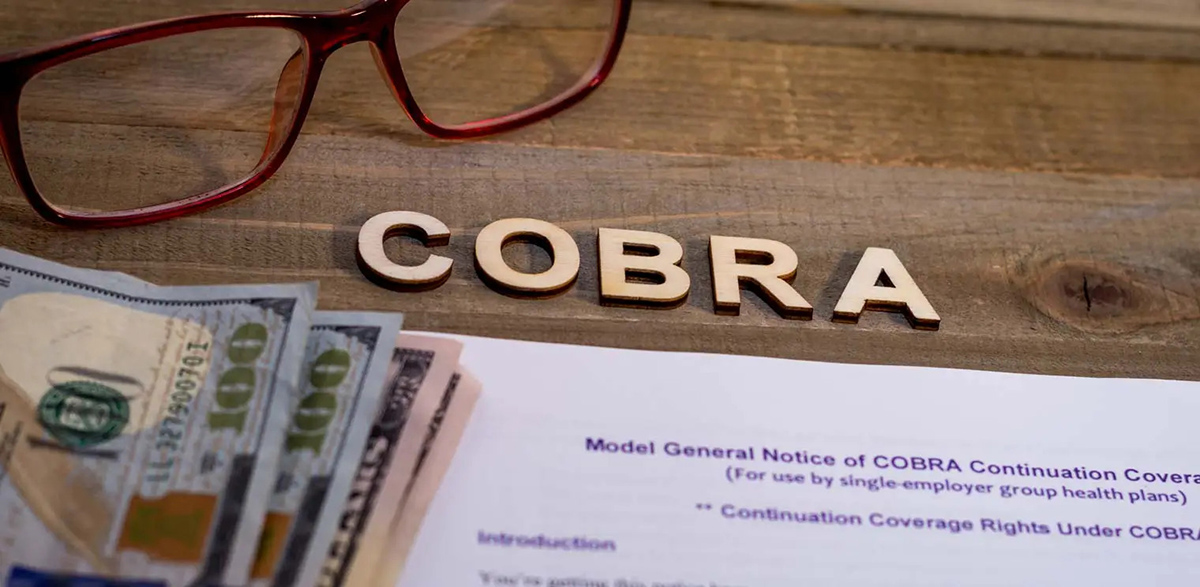

Finance
How To Add Tradelines To Your Credit Report
Modified: March 6, 2024
Learn how to boost your credit score by adding tradelines to your credit report. Take control of your finances and improve your financial standing.
(Many of the links in this article redirect to a specific reviewed product. Your purchase of these products through affiliate links helps to generate commission for LiveWell, at no extra cost. Learn more)
Table of Contents
- Introduction
- Understanding Tradelines
- Types of Tradelines
- Benefits of Adding Tradelines to Your Credit Report
- How to Find Legitimate Tradeline Suppliers
- Factors to Consider Before Adding Tradelines
- Step-by-Step Guide on Adding Tradelines to Your Credit Report
- Potential Risks and Pitfalls to Avoid
- Maintaining a Healthy Credit Profile
- Conclusion
Introduction
Having a good credit score is essential for your financial well-being. It determines your eligibility for loans, mortgages, and credit cards, and plays a vital role in determining the interest rates you’ll receive. If you have a low credit score or a limited credit history, it can be challenging to qualify for favorable lending terms.
One strategy that many individuals use to improve their credit profile is adding tradelines to their credit report. Tradelines are credit accounts that appear on your credit report and can positively impact your credit score. These accounts, typically held by lenders or financial institutions, provide information about your borrowing and repayment habits to credit reporting agencies.
Adding tradelines to your credit report involves becoming an authorized user on someone else’s credit account. As an authorized user, the positive payment history, credit limit, and length of the tradeline will be reflected on your credit report. This can result in an increased credit score and a more robust credit profile.
In this article, we will explore the different types of tradelines, the benefits of adding them to your credit report, and how to find legitimate tradeline suppliers. We will also provide a step-by-step guide on adding tradelines to your credit report, along with potential risks and pitfalls to avoid. Lastly, we’ll offer tips on maintaining a healthy credit profile to make the most of your improved credit score.
Understanding Tradelines
Tradelines are credit accounts that appear on your credit report and provide valuable information about your borrowing and repayment habits. They play a crucial role in determining your credit score and overall creditworthiness.
When you become an authorized user on someone else’s credit account, that account becomes a tradeline on your credit report. This means that the account owner’s payment history, credit limit, and account age will be included in your credit profile. If the account owner has a good credit history and maintains a low credit utilization ratio, becoming an authorized user on their tradeline can have a positive impact on your credit score.
It is important to note that adding tradelines to your credit report does not mean you are legally responsible for the debt incurred on the account. As an authorized user, you have the benefit of the positive credit history associated with the tradeline without taking on any financial liability.
Tradelines come in various forms, including credit cards, auto loans, mortgages, and personal loans. Each tradeline has its own characteristics, such as the credit limit, outstanding balance, and payment history. These factors contribute to your overall credit profile and can greatly influence your creditworthiness in the eyes of lenders.
Tradelines also have an impact on two essential factors used to calculate credit scores: credit utilization ratio and credit history length. The credit utilization ratio is the percentage of available credit that you are currently using. A lower ratio indicates responsible credit management and can lead to a higher credit score. The length of credit history measures the age of your credit accounts, with longer histories generally viewed more favorably.
By adding tradelines with a long and positive credit history to your credit report, you can potentially increase your credit history length and improve your credit utilization ratio, both of which can positively influence your credit score.
Now that we’ve covered the basics of tradelines, let’s explore the different types of tradelines available and how they can benefit your credit profile.
Types of Tradelines
There are various types of tradelines that you can add to your credit report to boost your credit score. Here are some of the most common types:
- Credit Cards: Being added as an authorized user on someone’s credit card account is a popular way to add a tradeline. The credit limit, payment history, and length of the credit card account will be reflected on your credit report.
- Auto Loans: Adding an auto loan tradeline can be beneficial if you have a limited credit history. This type of tradeline demonstrates your ability to make regular payments and manage a significant loan.
- Mortgages: Becoming an authorized user on a mortgage tradeline can be advantageous if the account has been open for a long time and the borrower has a history of timely payments. This type of tradeline shows that you have experience managing a substantial debt responsibly.
- Personal Loans: Adding a personal loan tradeline can contribute to a well-rounded credit profile. It demonstrates your ability to manage different types of credit and shows responsibility in repaying installment loans.
- Retail Store Cards: Many retail stores offer credit cards, and being added as an authorized user on one of these accounts can help diversify your credit profile. Just like with other tradelines, you will benefit from the primary account holder’s credit history and payment habits.
- Business Accounts: For entrepreneurs, adding a business tradeline to your credit report can be useful. This includes accounts related to business loans, credit cards, and lines of credit. It can help establish a solid credit history for your business.
When selecting tradelines to add to your credit report, it’s important to choose accounts that have a positive payment history and a low credit utilization ratio. These factors will have the most significant impact on your credit score.
Now that we understand the different types of tradelines available, let’s explore the benefits of adding these tradelines to your credit report.
Benefits of Adding Tradelines to Your Credit Report
Adding tradelines to your credit report can provide several benefits and help improve your overall credit profile. Here are some advantages of adding tradelines:
- Improvement in Credit Score: One of the primary benefits of adding tradelines is the potential increase in your credit score. If the tradelines you add have a long and positive credit history, it can significantly impact your creditworthiness and improve your chances of getting approved for loans and credit cards.
- Expanded Credit History: If you have a limited credit history, adding tradelines can help expand and diversify it. This is beneficial because lenders typically prefer borrowers who have a longer credit history, demonstrating their ability to manage credit responsibly.
- Decreased Credit Utilization Ratio: The credit utilization ratio is the amount of credit you are currently utilizing compared to your total credit limit. By adding tradelines with high credit limits and low balances, your overall credit utilization ratio can decrease, which is viewed positively by credit bureaus and can boost your credit score.
- Increased Approval Odds: When you have a stronger credit profile, lenders are more likely to approve your applications for loans or credit cards. Adding positive tradelines can demonstrate responsible credit management and increase your chances of getting approved for better loan terms and interest rates.
- Build Credit without Incurring Debt: Unlike obtaining credit on your own, where you are responsible for the debt, adding tradelines allows you to benefit from someone else’s credit history without taking on any financial liability. This can be helpful if you are looking to improve your credit without the risk of accumulating debt.
- Establishing Credit for New Borrowers: For individuals who are new to credit or have a thin credit file, adding tradelines can help establish credit and demonstrate your ability to handle credit responsibly. This can be especially advantageous for those who are just starting their financial journey.
It’s important to note that although adding tradelines can have significant benefits, it’s not a guaranteed solution for all credit issues. Each individual’s credit situation is unique, and the impact of tradelines can vary. It’s crucial to consider other factors such as payment history, credit inquiries, and the overall health of your credit profile.
Now that we understand the benefits of adding tradelines, let’s learn how to find legitimate tradeline suppliers to ensure a secure and reliable process.
How to Find Legitimate Tradeline Suppliers
When it comes to adding tradelines to your credit report, it’s essential to work with legitimate and reputable tradeline suppliers. It’s crucial to take the necessary precautions to protect your personal and financial information. Here are some tips to help you find legitimate tradeline suppliers:
- Do Your Research: Start by researching and reading reviews about different tradeline suppliers. Look for established companies with a track record of providing reliable and legitimate tradelines.
- Check for Certification: Legitimate tradeline suppliers may be certified by industry organizations or have accreditations that validate their credibility.
- Verify Licensing and Compliance: Ensure that the tradeline supplier complies with all necessary legal and regulatory requirements. Check if they have the required licenses to offer tradeline services in your jurisdiction.
- Transparency and Disclosure: Legitimate tradeline suppliers will provide clear and transparent information about their services, including costs, terms, and conditions. They should be willing to answer any questions or concerns you may have.
- Credible Referrals: Seek recommendations from trusted sources, such as financial advisors or friends who have successfully added tradelines to their credit report. Their experiences can provide valuable insights into the credibility of different suppliers.
- Avoid Unrealistic Promises: Be cautious of tradeline suppliers that make lofty guarantees or promise immediate and significant improvements in your credit score. Improving your credit takes time and responsible credit management.
- Secure Transactions: Verify that the tradeline supplier has secure payment gateways and protocols in place to protect your financial information during transactions.
- Customer Support: Legitimate tradeline suppliers will have reliable customer support to address any concerns or issues you may encounter during the tradeline process. Prompt and helpful customer service is a good indicator of a reputable company.
Remember, adding tradelines to your credit report should be done with caution and thorough research. It’s always advisable to consult with a financial advisor or credit professional before making any decisions.
Now that we know how to find legitimate tradeline suppliers, let’s move on to considering the factors you should take into account before adding tradelines to your credit report.
Factors to Consider Before Adding Tradelines
Adding tradelines to your credit report can have a significant impact on your credit score and overall credit profile. However, before you proceed with adding tradelines, there are several important factors you should consider:
- Credit Goals: Determine your credit goals and understand how adding tradelines can help you achieve them. Whether you are looking to qualify for a specific loan or improve your overall creditworthiness, knowing your objectives will guide you in selecting the right tradelines to add.
- Credibility and Legitimacy: Always work with reputable and legitimate tradeline suppliers. Verify their credentials, licenses, and certifications to ensure you are dealing with trustworthy professionals. Avoid fraudulent schemes that claim to offer instant credit score improvements.
- Credit Mix: Consider the current composition of your credit mix. Adding tradelines that diversify your credit profile can be beneficial, as lenders appreciate borrowers who can responsibly manage different types of credit accounts.
- Timing: Assess whether the timing is right for adding tradelines. If you have recent negative entries on your credit report, it might be better to address those issues first before adding tradelines. Adverse elements can outweigh the positive impact of the tradelines.
- Costs and Fees: Understand the costs associated with adding tradelines. Legitimate tradeline suppliers may charge fees for their services. Evaluate the costs involved and ensure they align with your budget and financial goals.
- Lease versus Purchase: Determine whether you want to lease or purchase the tradelines. Leasing allows you to temporarily add tradelines to your credit report, while purchasing offers a more permanent solution. Consider your specific needs and budget when deciding between the two options.
- Personal Relationships: If you know someone with excellent credit and a long and positive credit history, consider approaching them to become an authorized user on their tradelines. This can be a cost-effective and mutually beneficial arrangement.
- Reputational Impact: Adding tradelines involves associating your credit profile with the primary account holder. Ensure that the primary account holder has a reputable credit history, as their actions can affect your credit profile as well.
It’s important to weigh these factors and consider your unique financial situation before proceeding with adding tradelines. Evaluating these considerations will help you make an informed decision and maximize the potential benefits of adding tradelines to your credit report.
Now that we’ve covered the factors to consider before adding tradelines, let’s dive into a step-by-step guide on how to add tradelines to your credit report.
Step-by-Step Guide on Adding Tradelines to Your Credit Report
Adding tradelines to your credit report involves a specific process to ensure that the information is accurately reflected. Here is a step-by-step guide on how to add tradelines to your credit report:
- Research and Select a Legitimate Tradeline Supplier: Start by researching and identifying a reputable tradeline supplier. Consider their credibility, customer reviews, and the types of tradelines they offer. Choose a supplier that aligns with your credit goals and budget.
- Provide Personal Information: Once you have chosen a tradeline supplier, you will need to provide them with your personal information. This includes your name, address, Social Security number, and any other details required to verify your identity.
- Select the Right Tradelines: Work with the tradeline supplier to choose the tradelines that best suit your credit goals. Consider factors such as the credit limit, payment history, and age of the tradeline to maximize the impact on your credit score.
- Review and Sign Contracts: Read and review the contracts provided by the tradeline supplier carefully. Ensure that you understand the terms and conditions, including any fees, obligations, and limitations associated with adding the tradelines. If you have any questions, seek clarification before signing the contracts.
- Make Payment: Once the contracts are signed, you will need to make the required payment to the tradeline supplier. Be aware of the payment methods accepted and the timeline for payment.
- Provide Necessary Documentation: The tradeline supplier may request additional documentation to verify your identity and authorize you as an authorized user on the tradelines. Provide any required documents promptly and accurately.
- Wait for the Tradelines to Appear: After completing the necessary steps, it’s time to wait for the tradelines to appear on your credit report. The duration can vary, but it typically takes around 30 days for the tradelines to be reported to the credit bureaus.
- Monitor Your Credit Report: Regularly monitor your credit report to ensure that the tradelines have been added accurately and reflect the desired information. Check for any discrepancies or errors and report them promptly to the credit bureaus.
- Acknowledge the Impact: Understand that adding tradelines to your credit report can have both positive and potential negative impacts. While it can improve your credit score, lenders may scrutinize your credit history and question your creditworthiness due to the authorized user status. Be prepared to provide explanations if needed.
- Maintain Responsible Credit Habits: Adding tradelines is not a one-time fix. To maintain a positive credit profile, continue practicing responsible credit habits. Pay bills on time, keep credit utilization low, and manage your overall credit responsibly.
It’s crucial to follow these steps carefully and work with a reputable tradeline supplier to ensure a smooth and accurate addition of tradelines to your credit report.
Now that we’ve covered the steps to add tradelines, let’s explore the potential risks and pitfalls to avoid.
Potential Risks and Pitfalls to Avoid
While adding tradelines to your credit report can offer benefits, it’s important to be aware of potential risks and pitfalls. Here are some to consider and avoid:
- Working with Unverified or Illegitimate Tradeline Suppliers: Be cautious of fraudulent individuals or companies offering tradelines. Always research and verify the credibility and legitimacy of the tradeline supplier before proceeding.
- Overpaying for Tradelines: Some tradeline suppliers may charge excessive fees for their services. Compare prices between different suppliers and ensure that the costs are fair and reasonable before making any payments.
- Adding Tradelines with Negative History: Adding tradelines with a negative payment history can have adverse effects on your credit score. Avoid adding tradelines that have a history of late payments, high balances, or other negative factors that could potentially damage your credit profile.
- Not Monitoring Your Credit Report: It’s essential to regularly monitor your credit report to ensure that the added tradelines are accurately reported. Keep an eye out for any discrepancies or errors, such as duplicate tradelines or incorrect information, and report them to the credit bureaus promptly.
- Lack of Communication with Primary Account Holders: If you become an authorized user on someone else’s tradelines, maintain open and clear communication with the primary account holder. Ensure that they continue to make timely payments and maintain responsible credit habits, as their actions can impact your credit profile.
- Dependence Solely on Tradelines: Adding tradelines to your credit report is not a guaranteed fix for all credit issues. It’s essential to practice responsible credit habits, such as paying bills on time, managing credit utilization, and maintaining a diverse credit mix, to strengthen your overall credit profile.
- Expecting Immediate Results: Improving your credit takes time. While adding tradelines can have a positive impact on your credit score, it’s important to be patient and allow sufficient time for the credit bureaus to update your credit report accordingly.
- Ignoring Other Aspects of Your Credit Profile: Adding tradelines alone may not address all aspects of your credit profile. Consider other factors such as payment history, credit inquiries, and the overall health of your credit accounts to ensure a comprehensive approach to credit improvement.
- Not Seeking Professional Advice: If you are unsure about the process or impact of adding tradelines, it’s advisable to seek guidance from a financial advisor or credit professional. They can provide personalized advice based on your specific credit situation.
By being aware of these potential risks and pitfalls, you can navigate the process of adding tradelines to your credit report more effectively and make informed decisions to improve your creditworthiness.
Now, let’s explore how to maintain a healthy credit profile even after adding tradelines.
Maintaining a Healthy Credit Profile
After adding tradelines to your credit report, it’s crucial to maintain a healthy credit profile to make the most of the positive impact on your credit score. Here are some tips to help you maintain a healthy credit profile:
- Pay Bills on Time: Consistently make payments on time for all your credit accounts, including the tradelines you have added. Late or missed payments can have a detrimental effect on your credit score and undo the progress made with the added tradelines.
- Keep Credit Utilization Low: Maintain a low credit utilization ratio by keeping your credit card balances and overall debt levels in check. Aim to use no more than 30% of your available credit to demonstrate responsible credit management.
- Diversify Your Credit Mix: Consider adding different types of credit accounts to your profile over time. This can include credit cards, loans, and other forms of credit. Having a diverse credit mix showcases your ability to handle various types of credit responsibly.
- Monitor Your Credit Report: Regularly review your credit report to ensure the accuracy of the reported information. Check for any errors, fraudulent activity, or discrepancies and report them promptly to the credit bureaus to keep your credit profile in good shape.
- Limit Credit Applications: Avoid applying for multiple credit accounts within a short period of time, as this can negatively impact your credit score. Each credit application results in a hard inquiry on your credit report, which can lower your score temporarily.
- Manage Debt Responsibly: If you have existing debts, make a plan to pay them down systematically. Prioritize high-interest debt and work towards reducing your overall debt load. Responsible debt management demonstrates your financial discipline.
- Stay Informed about Credit: Keep yourself updated on the latest credit-related information and financial management practices. Understand how credit scoring works, learn about credit-building strategies, and stay informed about any changes in credit regulations.
- Avoid Closing Old Accounts: Closing old credit accounts can shorten your credit history and potentially reduce the overall average age of your credit accounts. Unless there is a compelling reason to close an account, consider keeping it open to maintain a long credit history.
- Communicate with Creditors: If you encounter any financial hardships or difficulties in meeting your payment obligations, communicate with your creditors. They may be willing to work out alternative payment arrangements or provide temporary relief to help you stay on track.
- Seek Professional Advice: If you are unsure about managing your credit or need assistance in maintaining a healthy credit profile, consider working with a financial advisor or credit counselor. They can provide personalized guidance based on your unique financial situation.
By following these tips and practicing responsible credit management, you can maintain a healthy credit profile and continue to benefit from the positive impact of the added tradelines on your credit report.
Now, let’s conclude our discussion on adding tradelines to your credit report.
Conclusion
Adding tradelines to your credit report can be a strategic way to improve your credit profile and increase your credit score. By becoming an authorized user on someone else’s credit accounts, you can benefit from their positive credit history and responsible credit management. However, it’s important to approach this process with caution and make informed decisions.
Understanding the different types of tradelines, the benefits they offer, and how to find legitimate tradeline suppliers are essential steps in this journey. Researching and selecting a reputable tradeline supplier, considering the factors before adding tradelines, and avoiding potential risks and pitfalls will help ensure a smooth and successful process.
Once you have added tradelines to your credit report, it’s crucial to maintain a healthy credit profile by practicing responsible credit habits. Paying bills on time, keeping credit utilization low, diversifying your credit mix, and regularly monitoring your credit report are all key components of maintaining a positive credit profile.
Remember, adding tradelines is not a quick fix solution, and results may vary for each individual. It’s important to be patient and understand that it takes time to see the full impact on your credit score. Additionally, it’s essential to continue practicing responsible credit management even after adding tradelines to ensure long-term credit success.
If you are unsure about the process or need assistance, consider seeking professional advice from a financial advisor or credit counselor. They can provide personalized guidance based on your specific financial situation and help you make the most of the tradeline addition process.
By understanding the process, taking necessary precautions, and staying proactive in managing your credit, you can successfully add tradelines to your credit report and pave the way for a healthier financial future.














